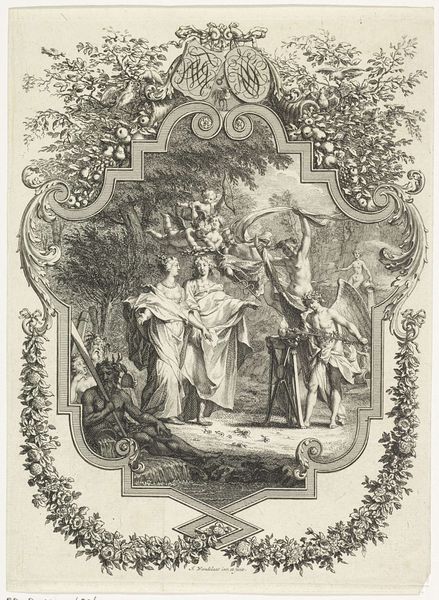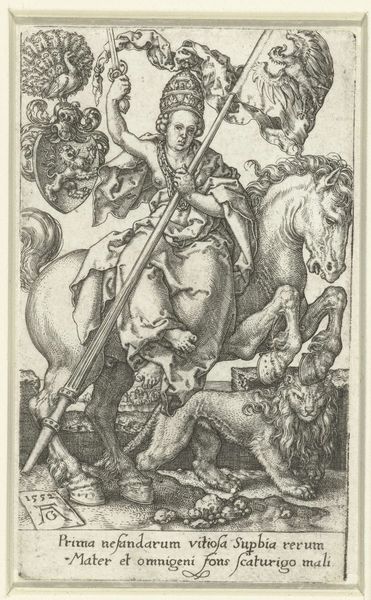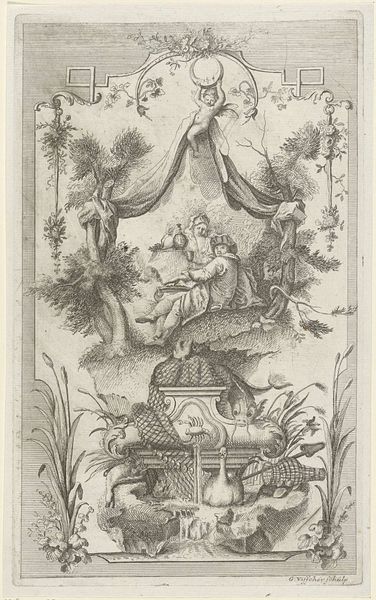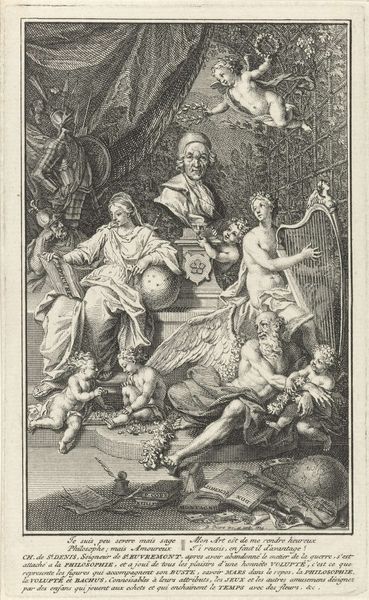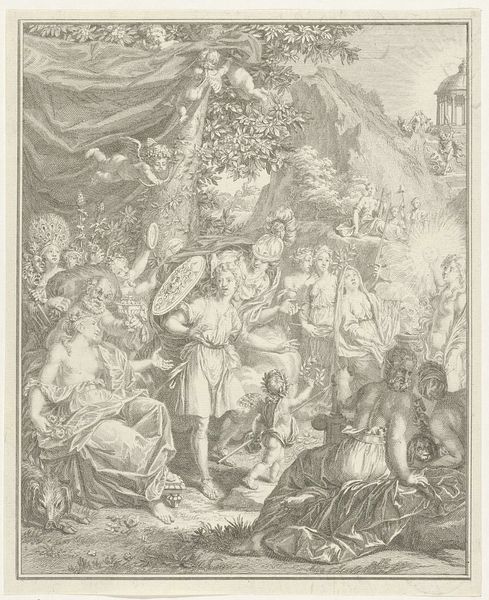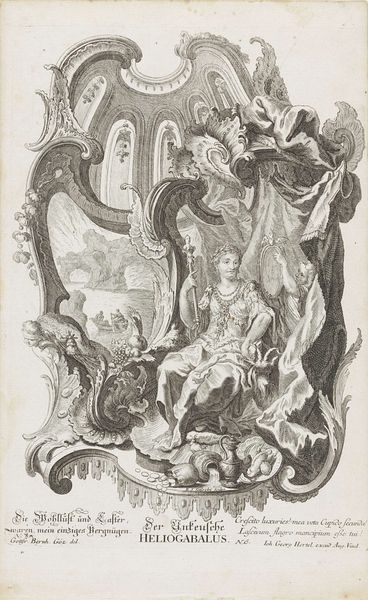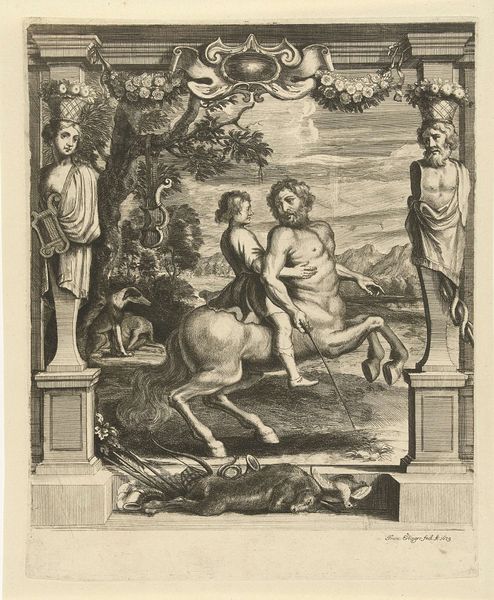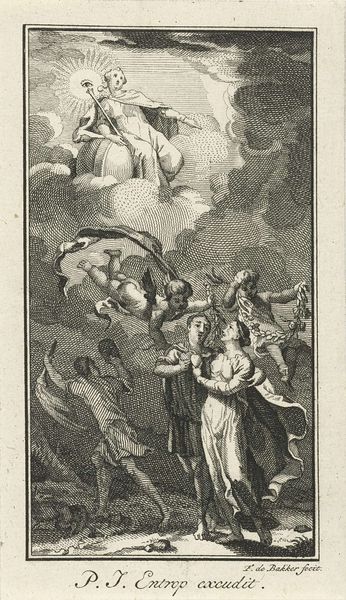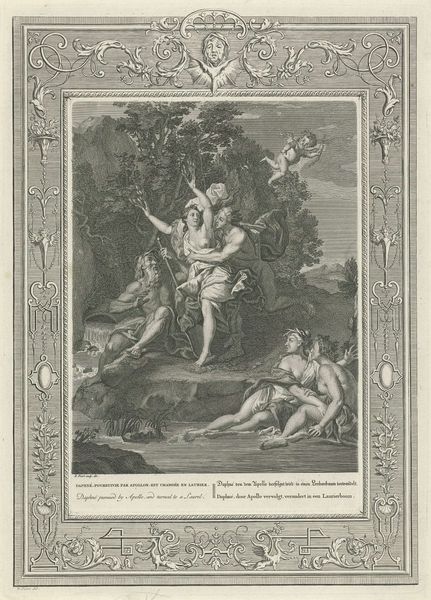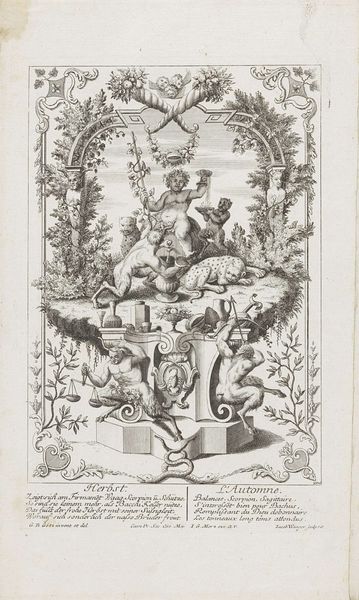
print, metal, engraving
#
portrait
#
allegory
#
baroque
# print
#
metal
#
figuration
#
line
#
history-painting
#
engraving
Dimensions: height 278 mm, width 190 mm
Copyright: Rijks Museum: Open Domain
Curator: We're standing before "Equestrian Portrait of Philip V of Spain," a print made between 1700 and 1707. Editor: It's immediately striking—the opulence, the rigid formality... A sense of almost divine right just radiating off it. Curator: The print, now held at the Rijksmuseum, was created through engraving, likely on a copper or similar metal plate, allowing for precise detail and the potential for multiple impressions. Think about the skill required to manipulate metal in this way! Editor: The whole piece reads as pure symbolism. We have Philip V, naturally the most imposing figure. And surrounding him are figures representing justice, triumph, fame—all classic allegorical tropes. He’s positioned almost heroically, conquering foes with ease. Curator: Consider how this print would have functioned. It's reproducible, portable propaganda in a way, cementing the king’s image. Disseminated widely, each print embodies labour, skill and raw materials, reaching people in a tangible, consumable form. Editor: Exactly, the symbols build a narrative. Look at the lion at the horse's feet. Is this Spain triumphing over a rival kingdom? It tells a story of conquest and unchallenged power. The horse alone as an archetypal emblem. Curator: I see not just a portrait, but also an assertion of dynastic power manufactured and propagated across lands through distribution and production. How might those receiving the images, depending on class, location or loyalty, interpret its messaging? Editor: And in the heavenly host above Phillip, it appears as a celebration of rule almost sanctified by powers both earthly and celestial, echoing traditions of deified royalty and eternal endorsement. It’s meant to solidify his claim and shape perception, not just record his existence. Curator: Well, considering the labor that went into making the printing plate, along with the materials consumed to distribute such a depiction to shape minds… it represents how such crafted and tangible mediums played political roles. Editor: Looking at this from the view of the artwork itself, I wonder if we can see it today removed from its context with the opportunity to interpret through a different cultural lens? What does the imagery resonate for today? Curator: It’s not just what it represents but how it was physically brought into the world that counts for its ongoing understanding. Editor: Yes, even with new materials, the artwork holds powerful stories and legacies, told to use with rich allegorical images, ready for rediscovery.
Comments
No comments
Be the first to comment and join the conversation on the ultimate creative platform.
